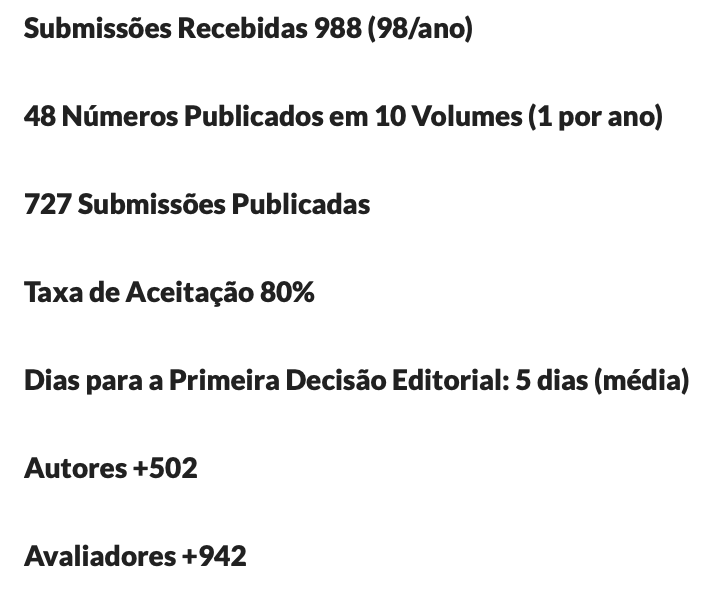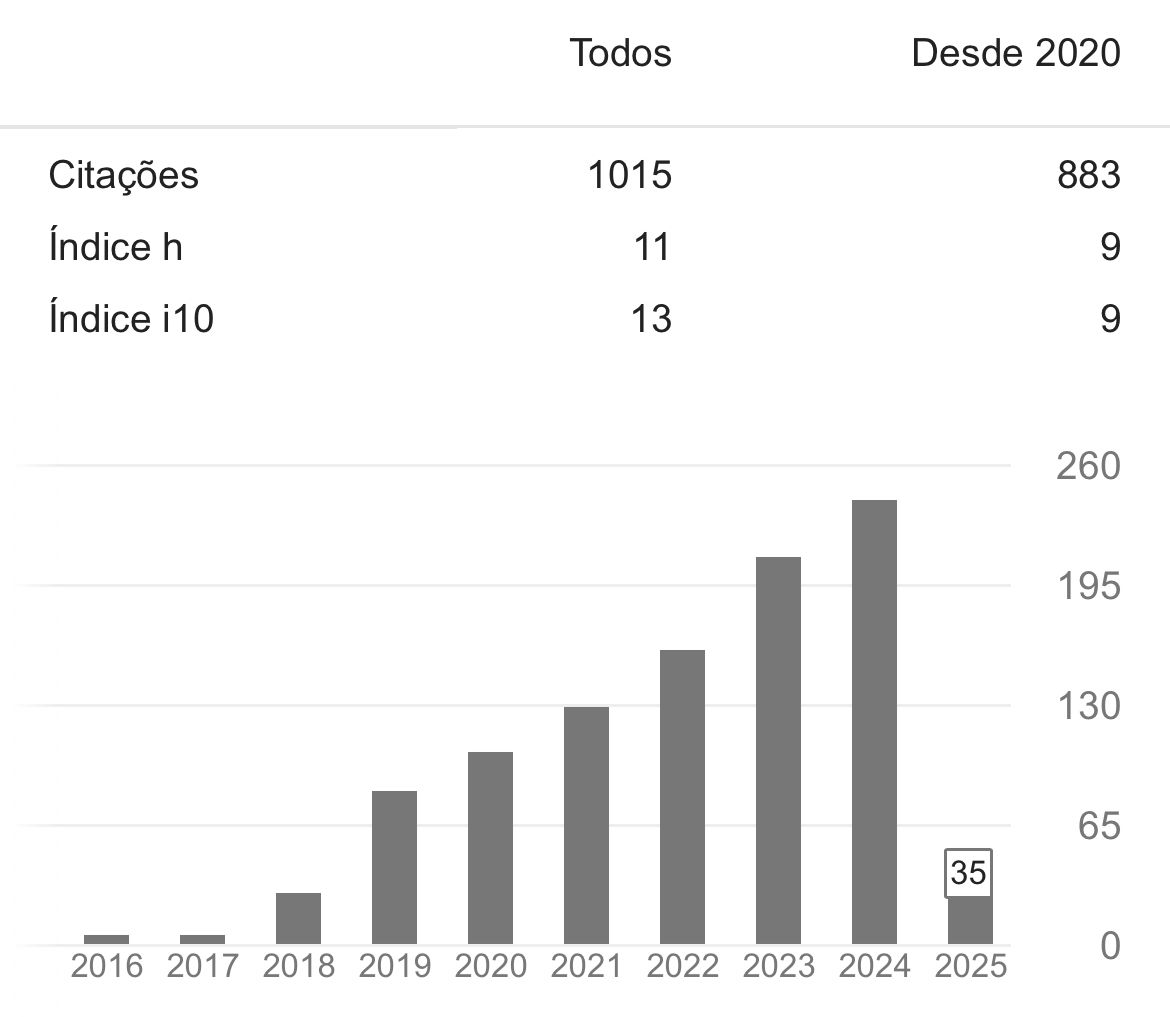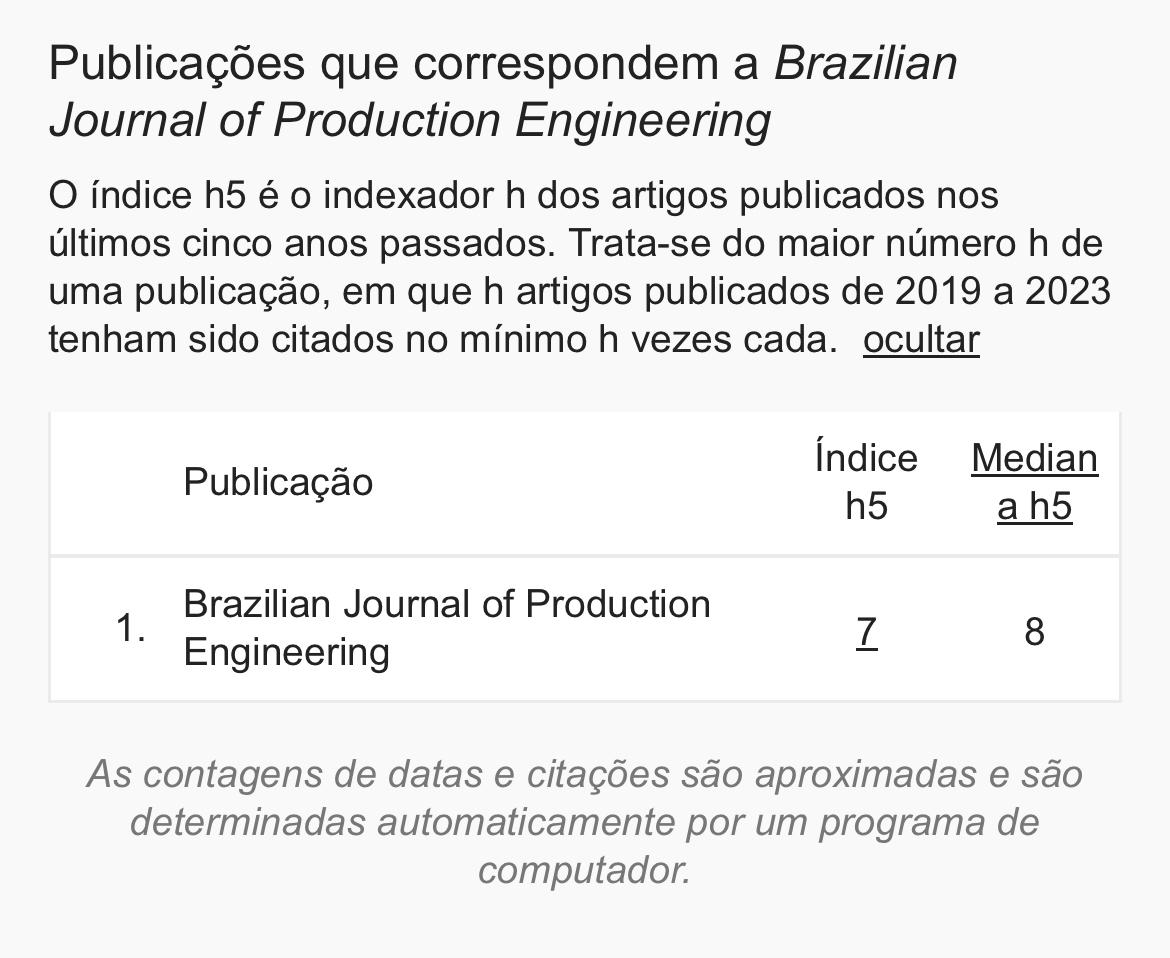IMPACT OF TRUCK DRIVERS' STRIKE ON RISK MANAGEMENT IN SUPPLY CHAINS: THE CASE OF A HOSPITAL IN THE STATE OF MINAS GERAIS
IMPACT OF TRUCK DRIVERS' STRIKE ON RISK MANAGEMENT IN SUPPLY CHAINS: THE CASE OF A HOSPITAL IN THE STATE OF MINAS GERAIS
Keywords:
Supply chain management, truckers strike, risk management in supply chains, contingency planAbstract
This article aims to demonstrate the importance of a risk management plan for supply chain management in the hospital sector. The risk mitigating actions of a hospital were analyzed during the truckers' strike that occurred in May 2018. A single case study was used, approached with a set of evidence collection instruments, both through analysis of the reports of the institution's manager target and document analysis. We opted for content analysis with categories established a priori and concerning the risk management literature in supply chains. The fundamental factor used by the hospital as a mitigation strategy was the quality program with a contingency plan and the hospital's relationship with its relationship networks. The sharing of information between these organizations was essential for the hospital to maintain the quality of the services provided.
Downloads
References
Behzadi, et al., (2017). Robust and resilient strategies for managing supply disruptions in agribusiness supply chain. International Journal of Production Economics, 191, p. 207–220.
Boehm, B. W. (1991). Software risk management: principles and practices. IEEE software, 8(1), 32-41.
Bowersox, D. J., Closs, J. D., Copper, M. B., & Bowersox, J. C. (2013). Gestão logística da cadeia de suprimentos. 4. ed. Porto Alegre: AMGH.
Braunscheidel, M. J. & Suresh, N. C. (2009). The organizational antecedents of a firm’s supply chain agility for risk mitigation and response. Journal of Operations Management, 27(2), 119-140.
Chopra, S., & Sodhi, M. S. (2004). Supply-chain breakdown. MIT Sloan management review, 46(1), p. 53-61.
Chowdhury, Md M. H., & Quaddus, M. (2017). Supply chain resilience: Conceptualization and scale development using dynamic capability theory. International Journal of Production Economics, 188, 185-204.
Christopher, M., & Lee, H. L. (2001). Supply chain confidence: the key to effective supply chains through improved visibility and reliability. Global Trade Management, p. 1-10.
Christopher, M., Mena, C., Khan, O., & Yurt, O. (2011). Approaches to managing global sourcing risk. Supply Chain Management: An International Journal, 16(2), 67–81.
Duhadway, S., Carnovale S., & Kannan V. R. (2005). Organizational Communication and Individual Behavior: Implications for Supply Chain Risk Management. Journal of Supply Chain Management, 14(1), 53-68.
Fahimnia, B., Tang, C. S., Davarzani, H., & Sarkis, J. (2015). Quantitative models for managing supply chain risks: A review. European Journal of Operational Research, 247(1), 1-15.
Gosling, J., & Naim, M. M. (2009). Engineer-to-order supply chain management: A literature review and research agenda. International Journal of Production Economics, 122(2), 741-754.
Hallikas, J., Karvonen, I., Pulkkinen, U., Virolainen, V., & Tuominen, M. (2004). Risk management processes in supplier networks. Int. J. Production Economics, 90, 47–58.
Harris, J.; Ozgen, H., & Ozcan,Y. (2000). Do mergers enhance the performance of hospital efficiency? Journal of the Operational Research Society, 51(7), 801-811.
Hayes, R. H., Pisano, G., Upton, D. & Wheelwright, S. C. (2008). Produção, estratégia e tecnologia: em busca da vantagem competitiva. Porto Alegre: Bookman.
Heckmann, I.; Comes, T. & Nickel, S. (2015). A critical review on supply chain risk – Definition, measure and modeling. Omega, 52, 119-132.
Jüttner, U., Peck, H., & Christopher, M. (2003). Supply chain risk management: outlining an agenda for future research. International Journal of Logistics: Research and Applications, 6(4), 197-210.
Khan, O., Christopher, M. & Burnes, B. (2008). The impact of product design on supply chain risk: a case study. International Journal of Physical Distribution & Logistics Management, 38(5), 412-432.
Khojasteh, Y. (2018). Developing Supply Chain Risk Mitigation Strategies. In: Supply Chain Risk Management. Springer, Singapore, p. 97-103.
Kilubi, I., & Rogers, H. (2018). Bridging the gap between supply chain risk management and strategic technology partnering capabilities: insights from social capital theory. Supply Chain Management: An International Journal, 23(4), 278-292.
Kleindorfer, P. R., & Saad, G. H. (2005). Managing disruption risks in supply chains. Production and operations management, 14(1), 53-68.
Knemeyer, et al., (2009). Proactive planning for catastrophic events in supply chains. Journal of Operations Management, 27, 141–153.
Knight, A. K., Blessner, P., Olson, B. A., & Blackburn, T. D. (2017). Strategic sourcing and corporate social responsibility: Aligning a healthcare organization's strategic objectives. Journal of Purchasing and Supply Management, 23(2), 94-104.
Koks, E. E., Jongman, B., Husby, T. G., & Botzen, W. J. (2015). Combining hazard, exposure and social vulnerability to provide lessons for flood risk management. Environmental science & policy, 47, 42-52.
Lavastre, O., Gunasekaran, A., & Spalanzani, A. (2012). Supply chain risk management in French companies. Decision Support Systems, 52(4), 828-838.
Ledwoch, A, Yasarcan, H., & Brintrup, A. (2018). The moderating impact of supply network topology on the effectiveness of risk management. International Journal of Production Economics, 197, 13-26.
Macvaugh, T. W. (2007). Complex organizational issues require complex solutions. Hospital Material Management. 32(4), 12-12.
Manuj, I., & Mentzer, J. T. (2008). Global supply chain risk management. Journal of business logistics, 29, (1), 133-155.
Mentzer, J. T., Dewitt, W., Keebler, J. S., Min, S., Nix, N. W., Smith, C. D., & Zacharia, Z. G. (2001). Defining supply chain management. Journal of Business logistics, 22(2), 1-25.
Miller, K. (1992). A framework for integrated risk management in international business, Journal of International Business Studies, Second Quarter, 311-331.
Prahalad, C. K., & Hamel, G. (1990). The Core Competence of the Corporation. Harvard Business Review, p. 3-15, May/June.
Rao, S., & Goldsby, T. J. (2009). Supply chain risks: a review and typology. The International Journal of Logistics Management. 20(1), 97-123.
Sawik, T. (2016). Integrated supply, production and distribution scheduling under disruption risks. Omega, 62, 131–144.
Schneller, E. S., & Smeltzer, L. R. (2006). Strategic management of the health care supply chain. Jossey-Bass.
Shou, Y. (2013). Perspectives on Supply Chain Management in the Healthcare Industry. 2nd International Conference on Science and Social Research, Atlantis Press.
Simchi-Levi, D., Kaminsky, P., & Simchi-Levi, E. (2010). Cadeia de suprimentos: projeto e gestão, 3. ed. Porto Alegre: Bookman.
Smith, K. (2003). Environmental hazards: assessing risk and reducing disaster. 4th ed. London: Routledge.
Spears, J. L., & Barki, H. (2010). User participation in information systems security risk management. MIS quarterly, p. 503-522.
Sreedevi, R., & Soranga, H. (2017). Uncertainty and supply chain risk: The moderating role of supply chain flexibility in risk mitigation. International Journal of Production Economics, 193(1), 332-342.
Stevenson, W. J., Hojati, M., & Cao, J. (2007). Operations management. Boston: McGraw-Hill/Irwin.
Stulz, R. M. (1996). Rethinking risk management. Journal of applied corporate finance, 9(3), 8-25.
Tang, C., & Tomlin, B. (2008). The power of flexibility for mitigating supply chain risks. International Journal of Production Economics, 116(1), 12-27.
Tillman, M. (2013). Surgical care improvement project and surgical site infections: can integration in the surgical safety checklist improve quality performance and clinical outcomes? Journal of Surgical Research, 184(1), 150-156.
Tomlin, B. (2006). On the value of mitigation and contingency strategies for managing supply chain disruption risks. Management Science, 52(5), 639-657.
Vyas, N., Beije, A., & Krishnamachari, B. (2019). Blockchain and the supply chain: concepts, strategies and practical applications. Kogan Page, London – UK.
Wang, L. (2018). Research on Risk Management for Healthcare Supply Chain in Hospital. 427 f. Tese (Doctor of Philosophy) – Curse of Supply Chain Risk Management, Liverpool John Moores University, Liverpool, England.
Ward, S., & Chapman, C. (2003). Transforming project risk management into project uncertainty management. International journal of project management, 21(2), 97-105.
Wiengarten, F., Humphreys, P., Gimenez, C., & Mcivor, R. (2016). Risk, risk management practices, and the success of supply chain integration. International Journal of Production Economics, 171, 361-370.
Womack, J. P., & Jones, D. T. (2004). A máquina que mudou o mundo. Gulf Professional Publishing.
Yokota, F., & Thompson, K. M. (2004). Value of information analysis in environmental health risk management decisions: past, present, and future. Risk analysis: an international journal, 24(3), 635-650.
Downloads
Published
How to Cite
Issue
Section
License
Copyright (c) 2020 Brazilian Journal of Production Engineering - BJPE

This work is licensed under a Creative Commons Attribution-NonCommercial-ShareAlike 4.0 International License.

















































































